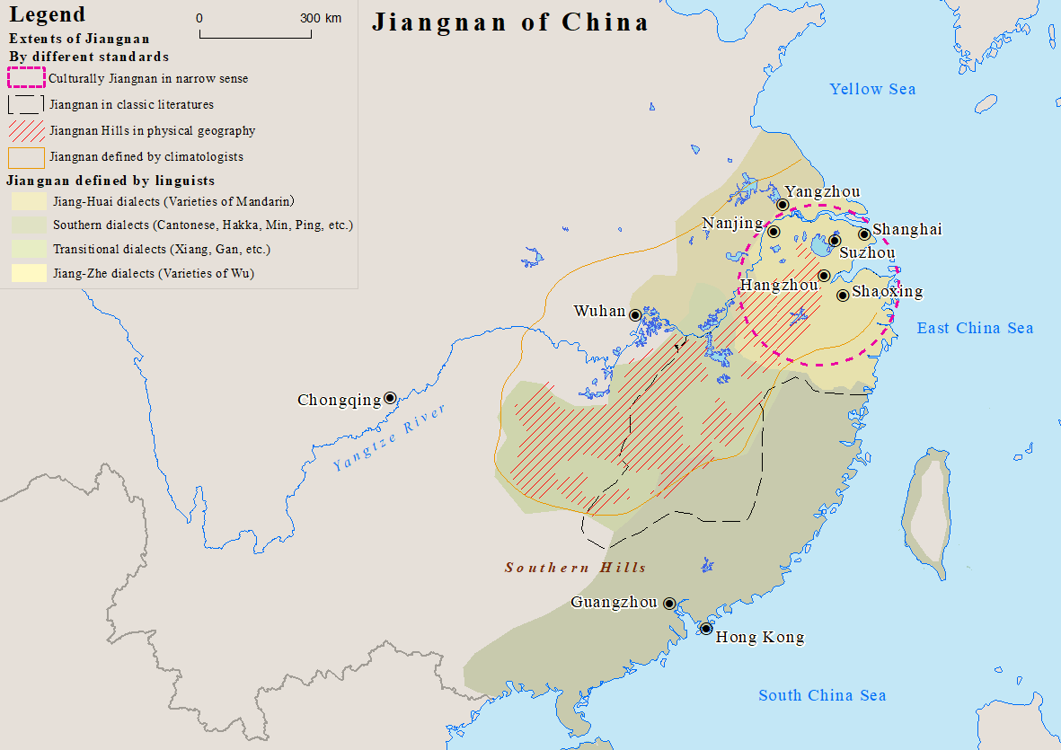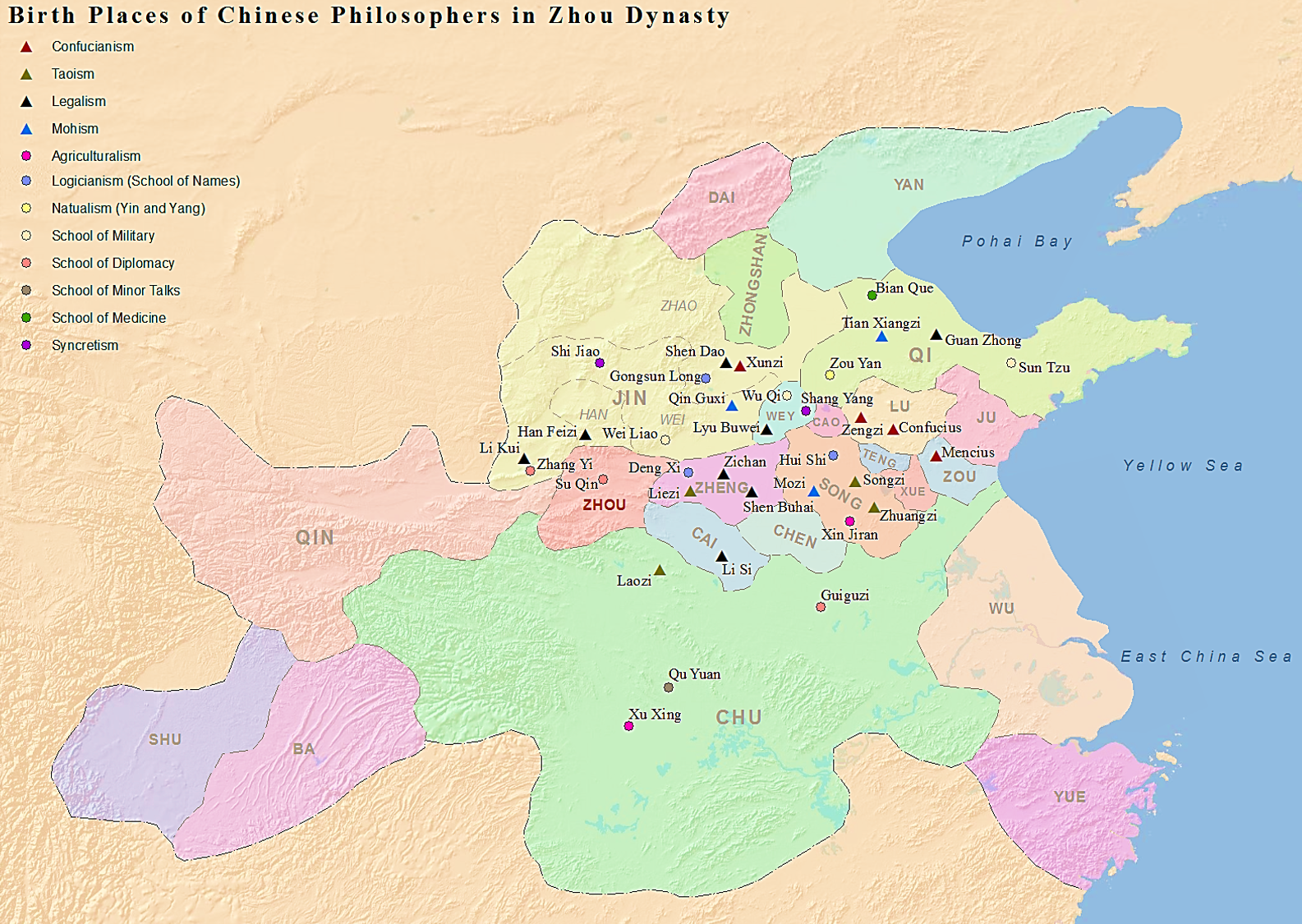|
Plum Flower Tradition
Baguadao (八卦道 "Way of the Eight Trigrams") or Eight Trigram Teaching (八卦教) is a network of Chinese folk religious sects, one of the most extended in northern China. The tradition dates back to the late 17th century Ming dynasty, and was heavily persecuted during the following Qing dynasty when affiliated sects organised an uprising in 1813, led by Lin Qing. Affiliated sects appeared under various names, but during the latter half of the 18th century they adopted ''Bagua Jiao'' as their common designation. The founder, or early influential leader of Baguadao was Liu Zuochen (†~1700), and the Liu family of Shandong maintained the leadership of the sect for decades. Baguadao networks were the first folk religions to develop " civil and martial work methods as one" (文武功法合一 ''wénwǔ gōng fǎ hé yī''), and continue in contemporary Meihua (Plum Flower) practices.Storti Enrico. Yihequan, Liguajiao, Hongquan e Meihuaquan'. History Little is known about ... [...More Info...] [...Related Items...] OR: [Wikipedia] [Google] [Baidu] |
Chinese Salvationist Religion
Chinese salvationist religions or Chinese folk religious sects are a Chinese religious tradition characterised by a concern for salvation (moral fulfillment) of the person and the society.; ''passim'' They are distinguished by egalitarianism, a founding charismatic person often informed by a divine revelation, a specific theology written in holy texts, a millenarian eschatology and a voluntary path of salvation, an embodied experience of the numinous through healing and self-cultivation, and an expansive orientation through evangelism and philanthropy. Some scholars consider these religions a single phenomenon, and others consider them the fourth great Chinese religious category alongside the well-established Confucianism, Buddhism and Taoism. Generally these religions focus on the worship of the universal God (Shangdi), represented as either male, female, or genderless, and regard their holy patriarchs as embodiments of God. Terminology and definition "Chinese salvationist ... [...More Info...] [...Related Items...] OR: [Wikipedia] [Google] [Baidu] |
Qianlong
The Qianlong Emperor (25 September 17117 February 1799), also known by his temple name Emperor Gaozong of Qing, born Hongli, was the fifth Emperor of the Qing dynasty and the fourth Qing emperor to rule over China proper, reigning from 1735 to 1796. The fourth son of the Yongzheng Emperor, he reigned officially from 11 October 1735 to 8 February 1796. In 1796, he abdicated in favour of his son, the Jiaqing Emperor, out of filial piety towards his grandfather, the Kangxi Emperor, who ruled for 61 years, so that he not officially usurp him as the longest-reigning emperor. Despite his retirement, however, the Qianlong Emperor retained ultimate power as the Emperor Emeritus until his death in 1799, making him one of the longest-reigning monarchs in history, and dying at the age of 87, one of the longest-lived. As a capable and cultured ruler inheriting a thriving empire, during his long reign, the Qing Empire reached its most splendid and prosperous era, boasting a large popula ... [...More Info...] [...Related Items...] OR: [Wikipedia] [Google] [Baidu] |
Yucheng County
Yucheng County () is a county located in the east of Henan province, People's Republic of China, affiliated to Shangqiu City, it is 47.5 kilometers wide from east to west, 67.6 kilometers long from north to south, with an area of 1485 square kilometers. It is adjacent to Liangyuan Park, Shangqiu New District and Yuyang District, bordering the provinces of Shandong to the north and Anhui to the south. It is under the administration of the prefecture-level city of Shangqiu Shangqiu (), alternately romanized as Shangkiu, is a city in eastern Henan province, Central China. It borders Kaifeng to the northwest, Zhoukou to the southwest, and the provinces of Shandong and Anhui to the northeast and southeast respectiv ..., with a population of approximately 1.08 million and an area of . According to preliminary statistics, in 2017, the gross domestic product (GDP) of Lucheng County was 25.72 billion yuan, the total retail sales of social consumer goods was 8.26 billion yuan, the inv ... [...More Info...] [...Related Items...] OR: [Wikipedia] [Google] [Baidu] |
Shan County
Shan County or Shanxian () is a county in the southwest of Shandong province, China, bordering the provinces of Anhui to the southeast and Henan to the southwest. It is under the administration of the prefecture-level city of Heze Heze, formerly known as Caozhou, is the westernmost prefecture-level city in Shandong province, China, it borders Jining to the east and the provinces of Henan and Anhui to the west and south respectively. History Caozhou was at the cent .... Administrative divisions As 2012, this County is divided to 4 subdistricts, 5 towns and 2 townships. ;Subdistricts ;Towns ;Townships * Gaolaojia Township () * Caozhuang Township () Climate References Counties of Shandong Heze {{Shandong-geo-stub ... [...More Info...] [...Related Items...] OR: [Wikipedia] [Google] [Baidu] |
Jinxiang County
Jinxiang County () is a county of southwestern Shandong province, People's Republic of China, bordering Jiangsu province to the southeast. It is under the administration of Jining Jining () is a prefecture-level city in southwestern Shandong province. It borders Heze to the southwest, Zaozhuang to the southeast, Tai'an to the northeast, and the provinces of Henan and Jiangsu to the northwest and south respectively. Jini ... City. The population was in 1999. The county town of Jinxiang is known as "the world's garlic capital", producing 80% of the world's garlic exports. Administrative divisions As 2012, this county is divided to 9 towns and 4 townships. ;Towns ;Townships Climate References External links Official homepage {{authority control Counties of Shandong Jining ... [...More Info...] [...Related Items...] OR: [Wikipedia] [Google] [Baidu] |
Ningyang County
Ningyang () is a county under the administration of the prefecture-level city of Tai'an, Shandong Province Shandong ( , ; ; alternately romanized as Shantung) is a coastal province of the People's Republic of China and is part of the East China region. Shandong has played a major role in Chinese history since the beginning of Chinese civilizati ..., China. Administrative divisions As 2012, this county is divided to 9 towns and 3 townships. ;Towns ;Townships *Heshan Township () *Dongzhuang Township () *Xiangyin Township () Climate References Counties of Shandong Tai'an {{Shandong-geo-stub ... [...More Info...] [...Related Items...] OR: [Wikipedia] [Google] [Baidu] |
Rongcheng County
Rongcheng () is a county in central Hebei province, China. It is under the jurisdiction of Baoding prefecture-level city A prefecture-level city () or prefectural city is an administrative division of the People's Republic of China (PRC), ranking below a province and above a county in China's administrative structure. During the Republican era, many of China' .... The area of the county is , while the county seat is located in Rongcheng Town. Administrative divisions Rongcheng County administers 5 towns () and 3 townships (): Towns: * Rongcheng (), Xiaoli (), Nanzhang (), Dahe (), Liangmatai () Townships: * Bayu Township (), Jiaguang Township (), Pingwang Township () Climate References External links Geography of Baoding County-level divisions of Hebei {{Baoding-geo-stub ... [...More Info...] [...Related Items...] OR: [Wikipedia] [Google] [Baidu] |
Jiangnan
Jiangnan or Jiang Nan (; formerly romanized Kiang-nan, literally "South of the River" meaning "South of the Yangtze") is a geographic area in China referring to lands immediately to the south of the lower reaches of the Yangtze River, including the southern part of its delta. The region encompasses the city of Shanghai, the southern part of Jiangsu Province, the southeastern part of Anhui Province, the northern part of Jiangxi Province and the northern part of Zhejiang Province. The most important cities in the area include Anqing, Changzhou, Hangzhou, Nanjing, Ningbo, Shaoxing, Suzhou, Wuxi, Wenzhou, and Zhenjiang. Jiangnan has long been regarded as one of the most prosperous regions in China due to its wealth in trade and very high human development. Most people of the region speak Wu Chinese dialects as their native languages. Etymology The word Jiangnan is based on the Chinese name for the Yangtze, ''Cháng Jiāng'', and ''nán'' meaning "south." In the 19th century, E ... [...More Info...] [...Related Items...] OR: [Wikipedia] [Google] [Baidu] |
Zhili
Zhili, alternately romanized as Chihli, was a northern administrative region of China since the 14th-century that lasted through the Ming dynasty and Qing dynasty until 1911, when the region was dissolved, converted to a province, and renamed Hebei in 1928. History The name ''Zhili'' means "directly ruled" and indicates regions directly ruled by the imperial government of China. Zhili province was first constituted during the Ming dynasty when the capital of China was located at Nanjing along the Yangtze River. In 1403, the Ming Yongle Emperor relocated the capital to Beiping, which was subsequently renamed Beijing.Susan Naquin, ''Peking: Temples and City Life, 1400-1900'', p xxxiii The region known as North Zhili was composed of parts of the modern provinces of Hebei, Henan, Shandong, including the provincial-level municipalities of Beijing and Tianjin. There was another region located around the "reserve capital" Nanjing known as South Zhili that included parts of what ... [...More Info...] [...Related Items...] OR: [Wikipedia] [Google] [Baidu] |
Baojuan
Baojuan (宝卷 ''bǎojuǎn''), literally precious scrolls, are a genre of prosimetric texts (texts written in an alternation of prose and verse) of a religious or mystical nature, produced within the context of Chinese folk religion and individual Chinese folk religious sects. They are often written in vernacular Chinese and recount the mythology surrounding a deity or a hero, or constitute the theological and philosophical Philosophy (from , ) is the systematized study of general and fundamental questions, such as those about existence, reason, knowledge, values, mind, and language. Such questions are often posed as problems to be studied or resolved. Som ... scriptures of organized folk sects. ''Baojuan'' is a type of performative text or storytelling found in China that emphasizes worship of ancient deities from Buddho-Daoist sects often recounting stories concerning suffering or apocalyptical scenarios. Due to the fact that ''Baojuan'' was not considered a serious ... [...More Info...] [...Related Items...] OR: [Wikipedia] [Google] [Baidu] |
Taoist
Taoism (, ) or Daoism () refers to either a school of philosophical thought (道家; ''daojia'') or to a religion (道教; ''daojiao''), both of which share ideas and concepts of Chinese origin and emphasize living in harmony with the '' Tao'' (, 'Thoroughfare'); the ''Tao'' is generally defined as the source of everything and the ultimate principle underlying reality. The ''Tao Te Ching'', a book containing teachings attributed to Laozi (), together with the later writings of Zhuangzi, are both widely considered the keystone works of Taoism. Taoism teaches about the various disciplines for achieving perfection through self-cultivation. This can be done through the use of Taoist techniques and by becoming one with the unplanned rhythms of the all, called "the way" or "Tao". Taoist ethics vary depending on the particular school, but in general tend to emphasize ''wu wei'' (action without intention), naturalness, simplicity, spontaneity and the Three Treasures: , compassion, ... [...More Info...] [...Related Items...] OR: [Wikipedia] [Google] [Baidu] |
Eternal Venerable Mother
The Queen Mother of the West, known by various local names, is a mother goddess in Chinese religion and mythology, also worshipped in neighbouring Asian countries, and attested from ancient times. From her name alone some of her most important characteristics are revealed: she is royal, female, and is associated with the west. The first historical information on her can be traced back to oracle bone inscriptions of the 15th century BCE that record sacrifices to a "Western Mother". Even though these inscriptions illustrate that she predates organized Taoism, she is most often associated with Taoism. The growing popularity of the Queen Mother of the West, as well as the beliefs that she was the dispenser of prosperity, longevity, and eternal bliss, took place during Han dynasty, in the 2nd century BCE, when the northern and western parts of China were able to be better known because of the opening of the Silk Road. Names ''Queen Mother of the West'' is a calque of Xiwangmu i ... [...More Info...] [...Related Items...] OR: [Wikipedia] [Google] [Baidu] |




